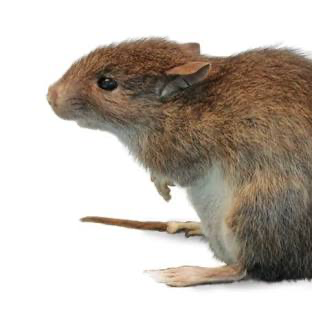October 2025 – My First Deployment (to Wake Atoll)
My First Deployment (to Wake Atoll) in August 2024
By Lisa Kamae
As I sit in the private jet with only 3 passengers and 2 dogs, I look around in awe. IS THIS A DREAM? I turn to Kyoko and look at her with my eyes all bugged out and mouth – OMG!!! Now this is the way I want all my deployments to be….hehehehe. But, I get ahead of myself. It all started with a request to volunteer.
Wake Atoll Rodent Eradication Project (WAREP) was my first deployment and at the time, Pāua was only a year and 3 months old. We (Pāua and I) had been training off and on and doing biosecurity training since I picked her up from the airport in September of 2023, but nothing intense that would lead to a deployment to some exotic location. Plus, at the time of the deployment, Kyoko and I did not know the extent of the Wake Atoll project. The only thing I knew was that Pāua could find rats and rat scat. We were not experienced in the traditional sense but I knew she could do the job. So Kyoko and I accepted the volunteer request and started planning for our deployment.

Kyoko and I go camping every year for New Yearʻs to get away from the fireworks (my dog Kaiao is sensitive to fireworks), so of course, deployment is just like going camping…right? NOT! You literally have to prepare for anything and everything. Especially for the dogs. Medical supplies, medical training, vaccine documentation, equipment, food, treats, toys and the list goes on. People think that going on deployment is exciting and so cool. It’s all of those things and also a lot of work.
All we knew about the project was that approximately 3-4 months prior to US Fish & Wildlife Service (USFWS) contacting us to volunteer, the US Air Force (USAF) had completed rodent bait drops with the goal of eliminating rats from Wake Atoll, and that this had been a years long project. For those of you who are not aware, Wake Atoll is made up of three islands: Wake, Wilkes and Peale. USDA and Island Conservation led the project and they were responsible for the continued monitoring until eradication was deemed successful. Three months after an aggressive baiting campaign, the team still saw signs of rats alive and were concerned that the rat population could rebound from just a few pregnant rats.
I was so EXCITED!!! Kyoko had gone on a deployment to Johnston Atoll for the Yellow Crazy Ant eradication project but she went by boat that time. This time, we were flying to Wake. I was still working full time (at my day job) and had to request time off to go on this volunteer trip. Because the project schedule didn’t align with the military flight schedule, USFWS ended up chartering a private jet to get us to Wake. Yes, you heard me right….A PRIVATE JET!!
To be continued….
Wake Rats
There are two types of rats that invaded Wake Island. The Polynesian Rat (Rattus exulans) also known as Pacific rat, little rat or kiore (in Aotearoa) and a packrat from New Mexico known as the white-throated woodrat (Neotoma albigula). Below are some facts you should be aware of about these two species.
Neotoma albigula VS Rattus exulans


| Neotoma albigula Facts | Rattus exulans Facts | ||
| Size | 32.8 cm / 12.9 in | Size | 15 cm / 5.9 in |
| Weight | 188-224grams | Weight | 40-80 grams |
| Lives in | Middens | Lives in | Burrows/Trees |
| Diet | Herbivorous/
Opportunistic |
Diet | Omnivorous |
| Pregnancy Period | 37-38 days | Pregnancy Period | 21-24 days |
| Litter size | 2 – 3 pups | Litter size | 6 – 11 pups |
| Active During | Nocturnal | Active During | Nocturnal |
| Breeding Period | January – August | Breeding Period | Spring & Summer |
You may be asking, “How did a wood rat from New Mexico get to Wake?” Well, Wake is an active air base for the US Air Force. It is speculated that the Neotoma hitched a ride on a USAF plane to the island and began to populate the island soon after arrival. As they reproduce slowly (compared to the Rattus exulans or Pacific rats), their numbers never grew to those of the Pacific rats. It was the Pacific rat that the WAREP team was concerned about after the aggressive baiting efforts.
